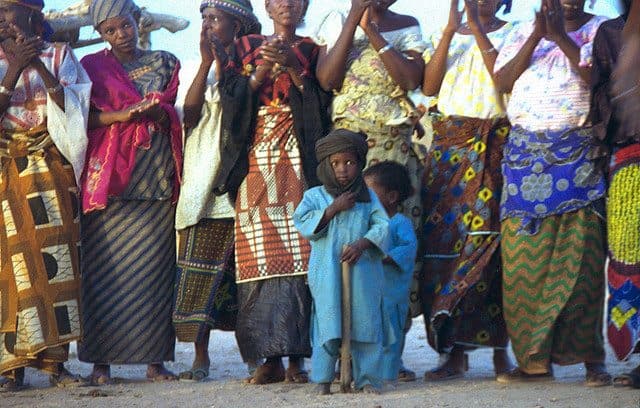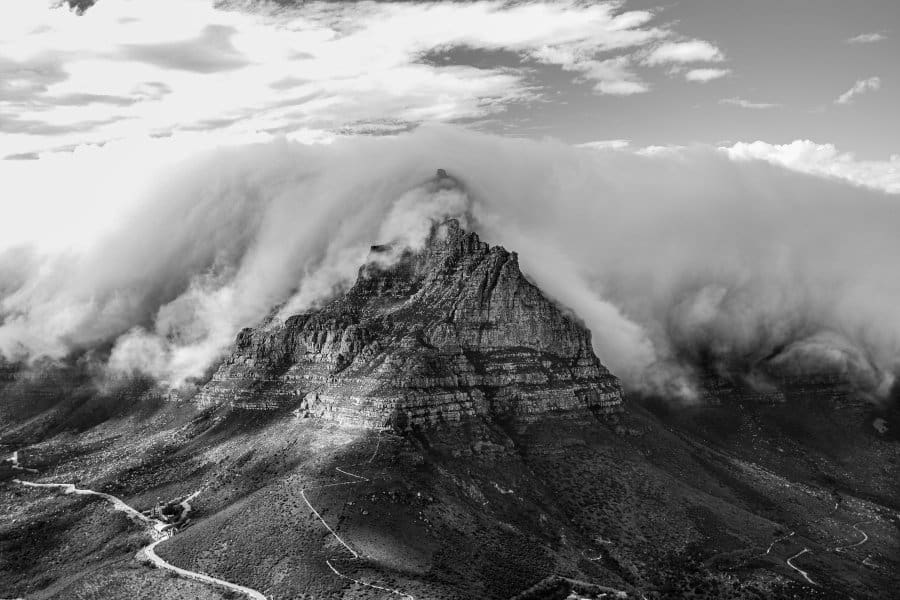Who are the Maasai? You may have heard whispers of their existence, floating up from the hills of East Africa. Their striking clothing and warrior ways have become lore around the globe, yet many people are unaware of the depth of their culture.
These semi-nomadic, pastoral people are among a handful of tribes who have maintained a mostly traditional way of life well into the 21st century. Their history is long and tangled with legends, and their lives are rich with culture and heritage.
Looking to discover the stories and secrets of the Maasai? Here’s your comprehensive guide.
A Brief Look into Maasai History
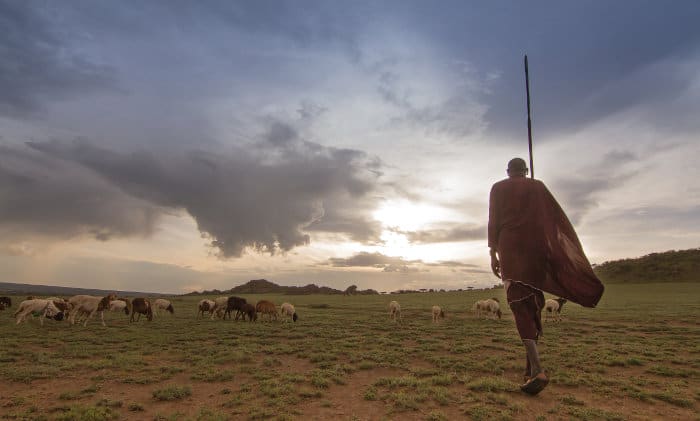
The Maasai are a well-known Nilotic ethnic group native to East Africa. Traditionally, they are semi-nomadic cattle and goat herders, with a current population of between one and two million individuals.
Based on the Maasai’s Nilotic language and unwritten history, the consensus is that they originated in South Sudan. Specifically, their roots are in the lower Nile Valley, somewhere near the border with northwestern Kenya.
Between the 15th and 18th century, the Maasai migrated south along the western flank of Kenya, leading them to the country’s border with northern Tanzania. Here, among some of Africa’s most revered national parks, is where the majority of the Maasai currently reside.
By the mid-1800s, the mighty Maasai were at their most powerful, having spread across the majority of Kenya and Northern Tanzania. However, the turn of the century brought what was locally known as the Emutai (meaning “wipe out” in Maa). In this five year period, around 60% of the Maasai sadly lost their lives through a series of disease outbreaks and severe drought.
The Tanzanian and Kenyan governments have pressured the Maasai to exchange their semi-nomadic lifestyle for a more “modern” way of life. Yet, many of them have resisted and continued their traditional customs to this day.
Maasai Villages

Traditionally, the Maasai people live in small huts (inkajijik) made from woven wood, cow dung, and mud. They’re simple structures that are easy to set up and maintain, making them perfect for a semi-nomadic lifestyle. As they move on from one settlement to another in search of greener pastures, they can rebuild their dwellings.
Most Maasai villages share a similar structure. A cluster of huts forms a village or homestead, called a ‘boma’, and a fence encircles them as a form of protection from predators. The Maasai men build this barrier, called an enkang, from the native, thorned acacia tree.
At the centre of a traditional Maasai village, you’ll find another fenced enclosure. This central pen is where the Maasai keep their livestock; a testament to how dearly the tribe holds its cattle.
Maasai Warrior – The Traditional Maasai Man
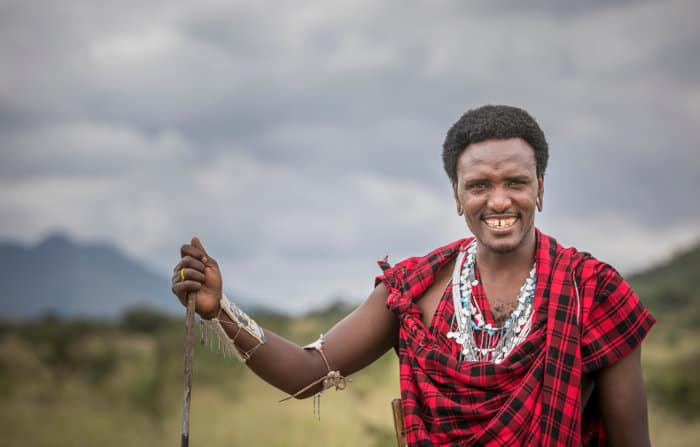
Traditionally, Maasai society is patriarchal, with male elders making all the significant decisions for the group. An age-set system also governs the hierarchy, particularly among men.
Throughout their boyhood, Maasai men are herd boys responsible for taking cattle out for grazing during the day.
At around age 15, these young men graduate to junior warrior status. As warriors (morans), they are responsible for protecting the herds from African predators and neighbouring tribes.
For the following 15 or so years, they live separately from the rest of the group, in areas called manyatta. Here, they undergo warrior training and ritualistic rites of passage.
Until recently, it was customary that, to claim warrior status, a young man must kill a lion with his Maasai spear. However, since the governments outlawed it as a ritual, this practice is no longer observed. Although a Maasai warrior will still kill a lion if it is a threat to his livestock.
At around age 30, junior morans become senior warriors and re-integrate with the rest of the tribe. During this stage of his life, a Maasai man acts as a guardian for the village. He can also get married to as many women as he likes, as the Maasai practice polygamy.
These periods of 15 years continue to promote Maasai men to higher statuses until they become elders at around age 60.
Maasai Women

In Maasai culture, both men and women have distinct responsibilities, each of which is important to the tribe’s wellbeing.
For example, while the men traditionally provide protection, the women are responsible for building their homes. This is among other responsibilities, such as milking cows, collecting water and firewood, cooking, and washing clothes.
Unlike the men, Maasai women comprise just two age sets; from birth to around 16 and from around 17 onwards.
Unfortunately, in traditional Maasai society, women are not entirely free in their life choices.
While a woman can choose up to three junior warrior lovers in her teenage years, her father will typically choose her husband. He will usually receive cattle or money as part of this exchange.
Maasai women tend to marry wealthy older men, so their families may see it as a way of saving them from a life of poverty.
Once a woman is married, her responsibilities expand to include the bearing of children; typically very many of them. It is also rare for a Maasai woman to be able to divorce or remarry, even in the event of her husband’s death.
The controversy of female circumcision
Young Maasai women must traditionally undergo the highly controversial process of female circumcision. It’s a rite of passage that is culturally essential for their transition from childhood to womanhood. As such, many Maasai see it as a necessity before marriage.
The practice is dangerous and violates a woman’s human rights, so organisations and governments have attempted to halt it through outlawing and forceful tactics. Yet, in many cases, this has just pushed it underground and into the shadows.
Activists are now calling for a different strategy that encourages the education of Maasai men and women on the dangers. This is with the hope of creating a more effective and tactful dismantling of the practice.
Traditions, Beliefs, and Maasai Culture
The Maasai people have a rich culture, bursting with art, music, dancing, and colour. Here’s a brief glimpse into their religion, customs, and artistic endeavours.
Maasai food
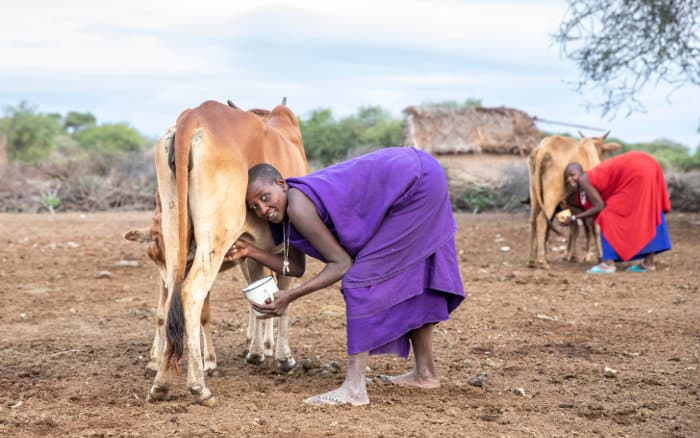
The traditional Maasai diet consists primarily of blood, milk, fat, and meat from their cattle, as well as honey and tree bark. They would drink both fresh and curdled milk regularly and use it to make butter.
Meat is a less common affair, as the Maasai measure a man’s wealth in terms of how many cattle he owns, not how many he eats.
Blood, which they obtain through a non-lethal cut in the cow’s jugular, is for special occasions. They drink it raw and mixed with milk, boil it, and use it in cooking.
However, Maasai diets have evolved over several decades, with cattle numbers dwindling. Today, most Maasai will supplement their diets with starches and vegetables, such as rice, sorghum, cabbages, and potatoes.
Maasai language
The Maasai speak an Eastern Nilotic language called Maa. Some call the language Maasai. However, technically ‘Maa’ refers to their language and culture, while Maasai refers to the people themselves.
They share this language with several other tribes, including the Samburu in Kenya and the Arusha in Tanzania.
Maasai religion

As a monotheistic society, The Maasai believe that there is one God, called Ngai. This God is neither male nor female but is dualistic in nature. Ngai Narok is black and benevolent, while Ngai Na-nyokie is red and vengeful, supposedly like the British.
According to their religion, Ngai is the creator of Earth and once lived among men. When Ngai ascended to the skies, he entrusted his cattle to the Maasai’s care. So the tribe sees cattle as holy gifts from God, and treats them as such.
Maasai clothing
Though their clothing varies based on age, sex, and location, the Maasai traditionally dress in striking cloth (called Shúkà) and decorative jewellery. Their robes are vibrant in colour, mostly reds and blues, and are one of the Maasai’s most recognizable traits globally.
Before colonisation, they wore dyed animal hides. But the newfound accessibility to other fabrics led them to adopt woollen and cotton cloth as the primary materials for their clothing.
Maasai arts
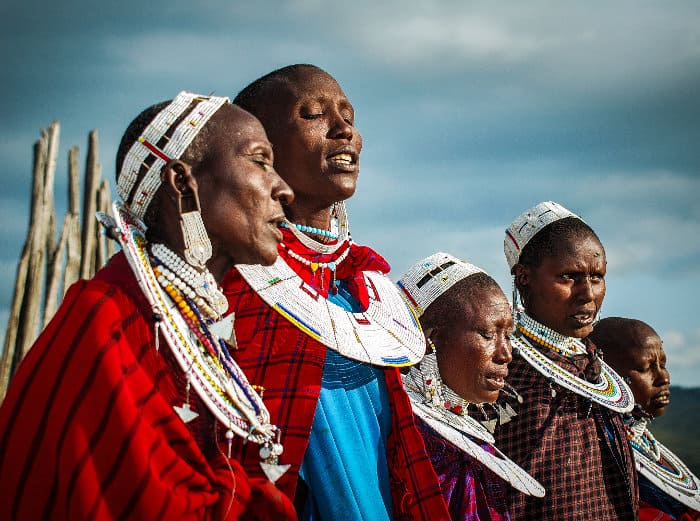
The tribe’s artistic pursuits are closely linked to their dress. Primarily, they’re avid jewellery makers, crafting necklaces, headbands, earrings, and bracelets with multi-coloured beads and cowhide.
These stunning jewellery pieces are an essential part of Maasai culture, with different items forming part of the various ceremonies, rituals, and life stages.
Maasai dance & music
Maasai warriors are well known for their competitive ‘jumping dance’, called adumu. The young men form a circle and, one at a time, they enter into the middle for their turn. The warrior at the centre will jump up and down, bending at the knee and achieving impressive heights.
The characteristic rhythmic chanting of Maasai music accompanies the dance. Outside of this ritual, they also sing traditional songs, and women chant lullabies and hum.
A Summary of the Mighty Maasai Tribe
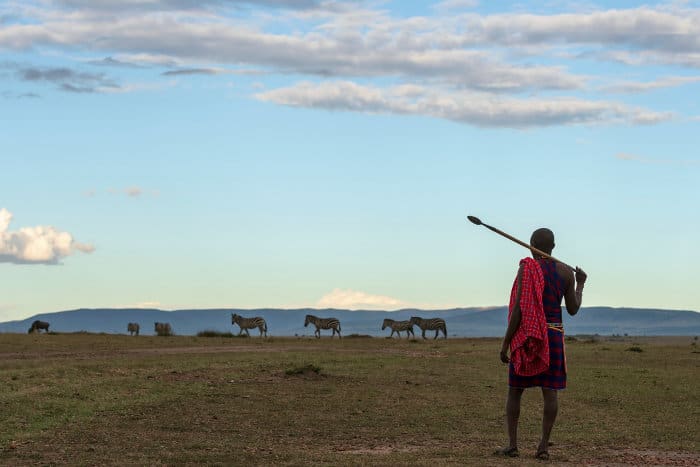
From the Maasai Mara and Amboseli to the Ngorongoro and Serengeti, the Maasai occupy a slice of heaven. It’s no wonder that they hold so dearly to their customs. They’re a beautiful, vibrant people, with fascinating tales and traditions, and plenty to show to the modern world.
Through their determined grip on a centuries-old way of life, they offer a glimpse into our human history, and remind us of the simplicities and tribulations of a semi-nomadic existence.
Are you looking to explore the Maasai’s home turf for yourself? Consider booking an African safari deal and put yourself one step closer to walking in their shoes.

